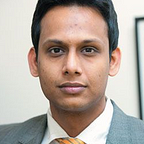74% Correct
TRAI recently recommended greater liberalization for FI Limits in the Broadcasting Sector. As expected the TRAI followed the methodology of differentiating between carriage services and content services. After pigeonholing services between these groups uniform FI limits were suggested.
The TRAI even applies this approach to Cable TV Services recommending that the FI limits (as for other carriage services) be increased to 74% from 49%. Data shows that most households receive Cable Television through highly fragmented Local Cable Operators (LCO’s). LCO’s spread in every nook and corner of the country primarily hold the last mile monopoly in providing cable services.
It is heartening that when seeking to increase FI limits in Cable TV Services, TRAI states in Para 2.12 of the recommendation, “2.12 The Ministry of Information & Broadcasting in its letter dated 11th December 2007, has indicated its preference about continuing the existing limit of 49% for the cable TV network segment. The reason given by the Ministry is that cable TV network is presently the backbone of TV distribution system and therefore, it is not advisable to allow it to pass on into foreign hands. This approach appears to be overcautious, because we need to remember that there are nearly 40,000 to 60,000 last mile cable TV operators and about 6000 multi system operators. It is inconceivable that even after consolidation, all these networks will pass on into foreign hands. Secondly, there are already four functional DTH operators, and three more are in the pipeline. All these DTH operators are large corporate entities of the country and they would provide excellent competition and alternative in times to come to the incumbent cable operators, whether foreign owned or domestically held. The cable network will be in a better position to face competition if revamping through higher investment is accomplished.”
The TRAI goes on state its rationale for recommending a hike in the present percentage of FI from 49% to 75%. It reasons that a hike in FI is necessary for the following reasons, (a) fragmentation leading to sub-optimal funding (b) fragmentation leading to poor quality of operations © need to upgrade present analogue cable TV networks to digital transmission technologies (d) decrease in monopolistic practices by local cable operators with a concomitant increase in competition.
The reasoning adopted is correct, more FI is certainly required in this sector, however it will be difficult to attract FI in this sector if it is allowed, only upto 74%. By the TRAI’s own admission, “[i]f such a vast cable network, serviced by 6000 MSOs and nearly 60,000 last mile cable operators, is to be digitalised in a conventional manner by setting up digital headends for each MSO in each city/town, then it will require an investment of more than Rs 15,000 crores, apart from a very long time required for the same…”.
A foreign entity will certainly be uncomfortable in making such levels of FI when its share will be capped at 74%. There are preexisting monopolies entrenched in this sector which will be resistant to competition. Here foreign players will find it incredibly difficult to invest money if they cannot be given complete control to tackle these monopolies. Hence, raising the FI limits to 74% may be a laudable recommendation, but seen holistically, it fails its purpose. Hence there is need to raise the FI limit to 100% (I am aware that ‘100% FI Limit’ is an oxymoron).
At present FI is permitted in the Cable Services upto 49%, however there are hardly any FI inflows in this sector. I see this trend continuing if FI limits are not raised to 100%.
_____
Post on — TRAI, “Recommendation’s on Foreign Investment Limits for Broadcasting Sector” (April 26, 2008).
